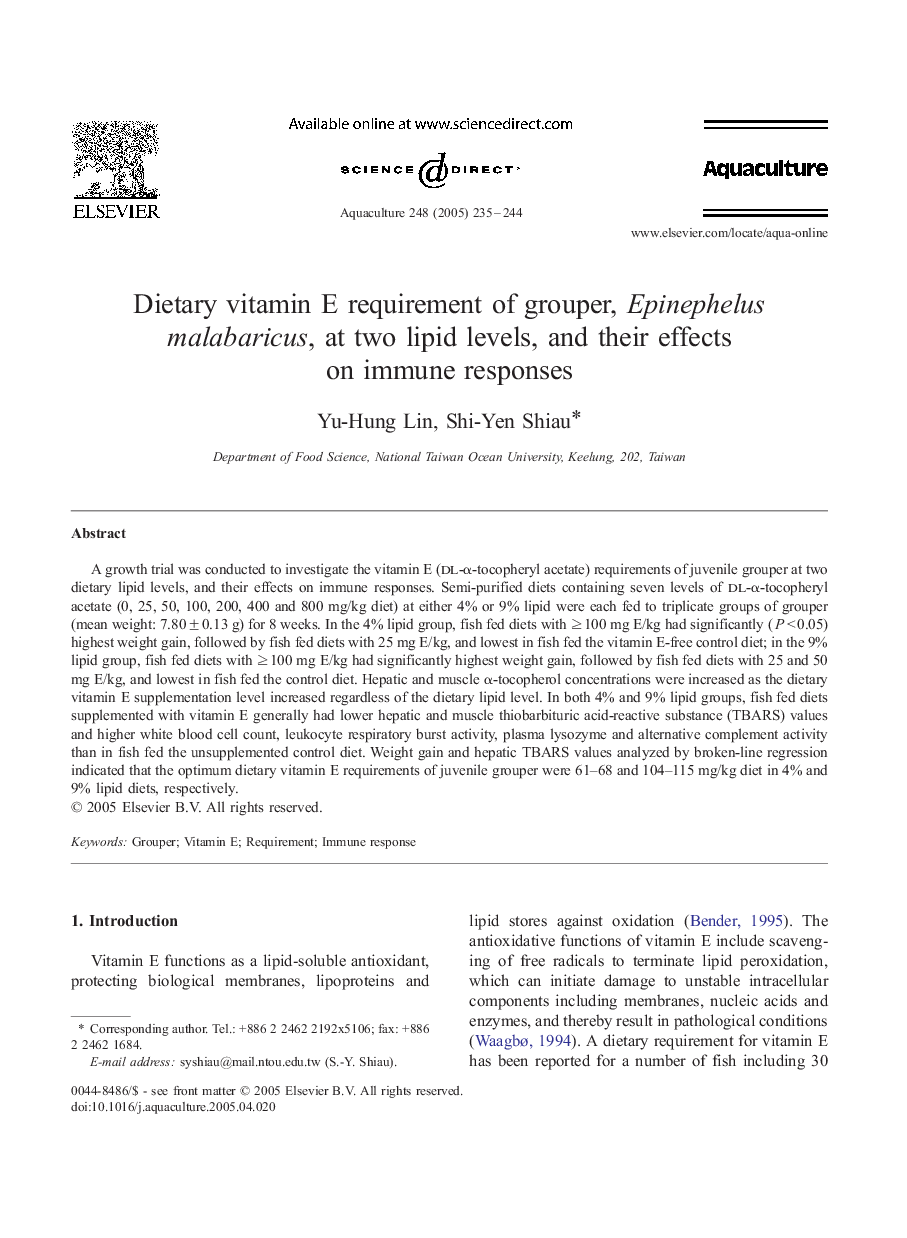| Article ID | Journal | Published Year | Pages | File Type |
|---|---|---|---|---|
| 8974828 | Aquaculture | 2005 | 10 Pages |
Abstract
A growth trial was conducted to investigate the vitamin E (dl-α-tocopheryl acetate) requirements of juvenile grouper at two dietary lipid levels, and their effects on immune responses. Semi-purified diets containing seven levels of dl-α-tocopheryl acetate (0, 25, 50, 100, 200, 400 and 800 mg/kg diet) at either 4% or 9% lipid were each fed to triplicate groups of grouper (mean weight: 7.80 ± 0.13 g) for 8 weeks. In the 4% lipid group, fish fed diets with â¥Â 100 mg E/kg had significantly (P < 0.05) highest weight gain, followed by fish fed diets with 25 mg E/kg, and lowest in fish fed the vitamin E-free control diet; in the 9% lipid group, fish fed diets with â¥Â 100 mg E/kg had significantly highest weight gain, followed by fish fed diets with 25 and 50 mg E/kg, and lowest in fish fed the control diet. Hepatic and muscle α-tocopherol concentrations were increased as the dietary vitamin E supplementation level increased regardless of the dietary lipid level. In both 4% and 9% lipid groups, fish fed diets supplemented with vitamin E generally had lower hepatic and muscle thiobarbituric acid-reactive substance (TBARS) values and higher white blood cell count, leukocyte respiratory burst activity, plasma lysozyme and alternative complement activity than in fish fed the unsupplemented control diet. Weight gain and hepatic TBARS values analyzed by broken-line regression indicated that the optimum dietary vitamin E requirements of juvenile grouper were 61-68 and 104-115 mg/kg diet in 4% and 9% lipid diets, respectively.
Related Topics
Life Sciences
Agricultural and Biological Sciences
Aquatic Science
Authors
Yu-Hung Lin, Shi-Yen Shiau,
